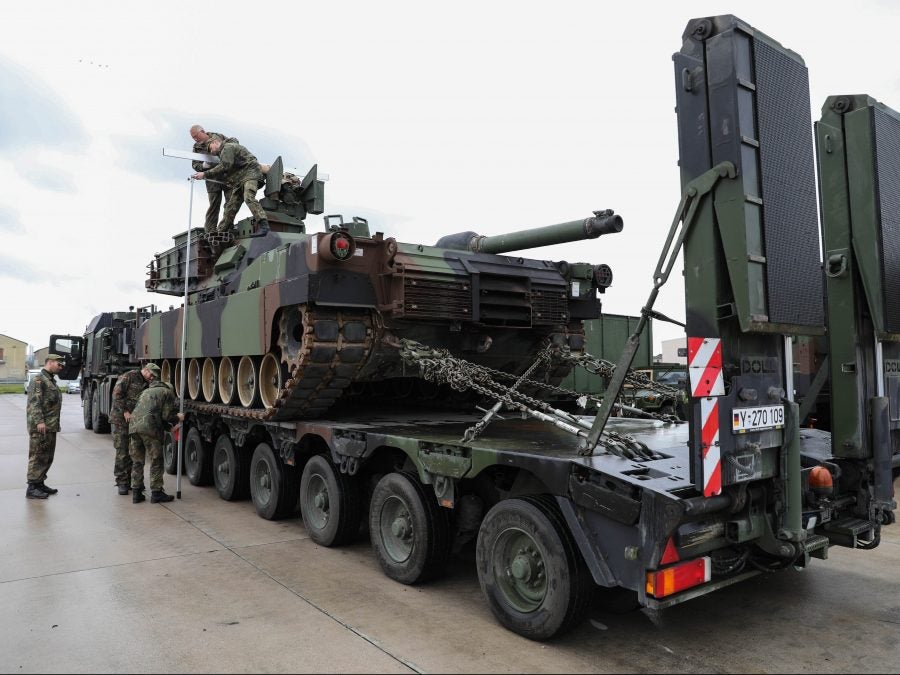
Defender Europe 20 will build bridges, both literally and metaphorically, as the US uses the deployment to prove it is ready to defend Europe at a moment’s notice, but also validate that European infrastructure is up to the task.
During a telephone press briefing on Monday, US Army Europe Deputy Chief of Staff Brigadier General Sean Bernabe gave more details about the enormous undertaking. The event, designed to build “strategic readiness” for the US Army, will deliver “20,000 US Army soldiers with their assigned equipment from the United States to Europe, and then move those soldiers to training areas throughout Europe to participate in other, smaller exercises.” Bernabe said.
How well do you really know your competitors?
Access the most comprehensive Company Profiles on the market, powered by GlobalData. Save hours of research. Gain competitive edge.

Thank you!
Your download email will arrive shortly
Not ready to buy yet? Download a free sample
We are confident about the unique quality of our Company Profiles. However, we want you to make the most beneficial decision for your business, so we offer a free sample that you can download by submitting the below form
By GlobalDataOn arrival, the troops are set to participate in a number of exercises across the continent including the multinational parachute exercise Swift Response, Sabre Strike the bi-annual ground manoeuvre across the Baltics and Exercise Allied Spirit “focused on interoperability at the brigade level and below between allies and partners.” After these conclude, the 20,000 troops will then redeploy back to the US.
Building bridges to build interoperability
Despite the centrepiece of the exercise being the massive cross-Atlantic troop move, the smaller linked exercises are just as important in cementing defensive collaboration between the US and Europe.
Commenting on possible Polish cooperation during Defender Europe 20, Bernabe said: “Poland will be one of the epicentres of one of those smaller, linked exercises I mentioned – in this case, exercise Allied Spirit. Allied Spirit features a live wet gap crossing, so in other words a river crossing, that will take place at the Drawsko Pomorskie Training Area in north-western Poland.
“This will be a division-size exercise led by the United States Army 1st Cavalry Division, but with multinational participants, including the 12th Mech from Poland and the 9th Mech from Poland”
In this instance, the Polish Ninth Mechanised Infantry Division will act as the adversary giving the US and Polish forces “a tough, realistic enemy force to practice against,” according to Bernabe. However, the general added that not just Poland will benefit from building a bridge to build interoperability, with a multinational bridging team, and rotary and fixed-wing support coming from the US and the Czech armed forces.
Defender Europe 20 will come as Poland runs its own large scale Exercise Anaconda, which has in the past incorporated ten NATO allies and around 10,000 personnel.
The US has previously completed a number of bridging exercises in Europe, with support from Romani, and other countries. However, Bernabe added: “Nonetheless, it is a great exercise to build our interoperability at that tactical level.”
 Romanian Land Vehicles cross a ribbon bridge during a showcase of interoperability between NATO Allies on Distinguished Visitor’s Day as part of exercise Saber Guardian 19. Credits: US DoD.
Romanian Land Vehicles cross a ribbon bridge during a showcase of interoperability between NATO Allies on Distinguished Visitor’s Day as part of exercise Saber Guardian 19. Credits: US DoD.
Building NATO “readiness”
Readiness is discussed all corners of the military, the need to improve it touted across almost every country’s armed forces. It is also a key function of Defender Europe 20, proving that the US is ready to cross the Atlantic and deploy to Europe when necessary. A graphic detailing the Defender Europe 20 mission makes this clear saying: “[Defender Europe 20] Demonstrates the US military’s ability to quickly deploy a large force to support NATO and respond to any crisis.”
Bernabe built on this saying that the Defender Europe 20, while not supporting the NATO readiness initiative directly, was important in achieving the same goals.
Bernabe said: “We are not only building strategic readiness by moving these 20,000 forces from the continental United States to Europe and then moving them across the continent to training areas but then we’re also building tactical readiness with every one of these smaller exercises.
“As we build that tactical readiness, as we give all of these units a chance to practice tactical tasks, and as we allow some of the key headquarters from the NATO force structure – for example, the Allied Rapid Reaction Corps, or Multinational Corps Northeast – as we allow them to practice commanding and controlling large-scale ground combat operations in simulation or in microcosm live exercises, we are certainly building readiness for NATO as a whole.”
Troop movements
Bernabe also offered insight into how the massive deployment will get from the US to Europe, and having arrived how personnel would move through bustling metropolitan areas. Most of the 13,000 pieces of equipment the exercise will use are already pre-positioned; however, these will still need to be manoeuvred from storage to staging area.
Focusing on Germany, Bernabe explained some of the logistical effort: “Germany will see the transit of convoys moving from the seaports to the training areas in Poland or in the Baltic states, and will likely – we’ll also see the arrival of forces into airports and then the movement of those forces by ground convoy or by bus to those training areas.”
Bernabe went on to explain that the mammoth task has been months in the planning to allow the “heavy lift” to go off without a hitch. He explained: “That’s why the entire army enterprise – frankly, the entire joint enterprise on the United States side – is completely engaged in this. And frankly, our allies here on the continent are well postured as well to receive those forces at the four ports, seaports, of debarkation, and then to move them by convoy, by rail, by line haul, by bus across the continent rapidly and expeditiously.
“So it’ll be difficult, but I can’t say enough about the work our allies and partners have done and are doing to make sure that this goes smoothly.”
 Defender Europe 20 infographic. Credits: US DoD.
Defender Europe 20 infographic. Credits: US DoD.
Why make the move?
The reason behind the exercise comes back to building readiness, and reassuring European allies that the US can cross the Atlantic in its time of need. Bernabe made clear readiness was the point of Defender Europe 20 and detailed its dual purpose to verify that Europe can handle such a large force movement.
Bernabe said: “The primary purpose of exercise Defender-Europe 20 is to practice projecting 20,000 forces from the United States to Europe. And then, of course, I think it’s important that we validate the infrastructure in Europe, our procedures and policies in Europe, to be able to move those forces quickly, efficiently, expeditiously to a point of need on the continent.”
Moving forces to Europe is relatively straightforward, however, moving those forces from coastal countries to Central and Eastern Europe is the wider test. In doing so Defender Europe 20 will not only boost the US’s and Europe’s ability to move masses of forces but also reassure the continent that if needed the US can make the trip.








